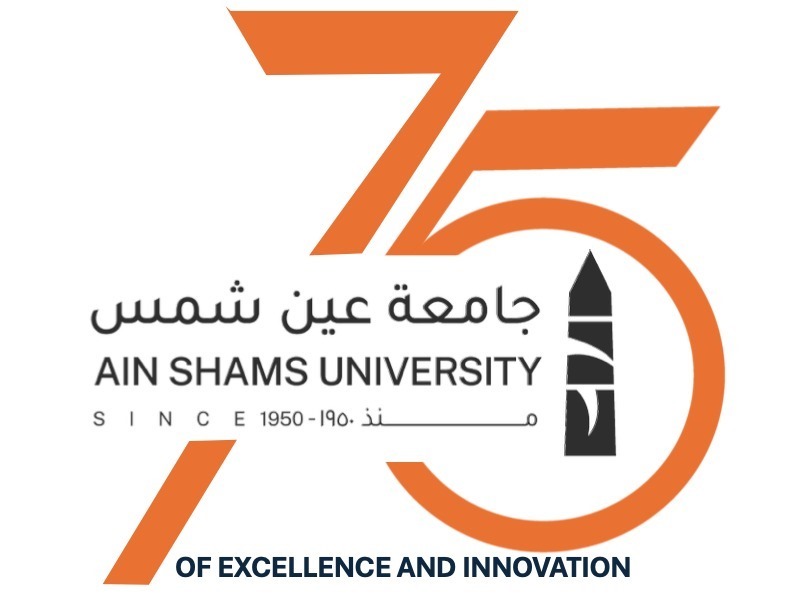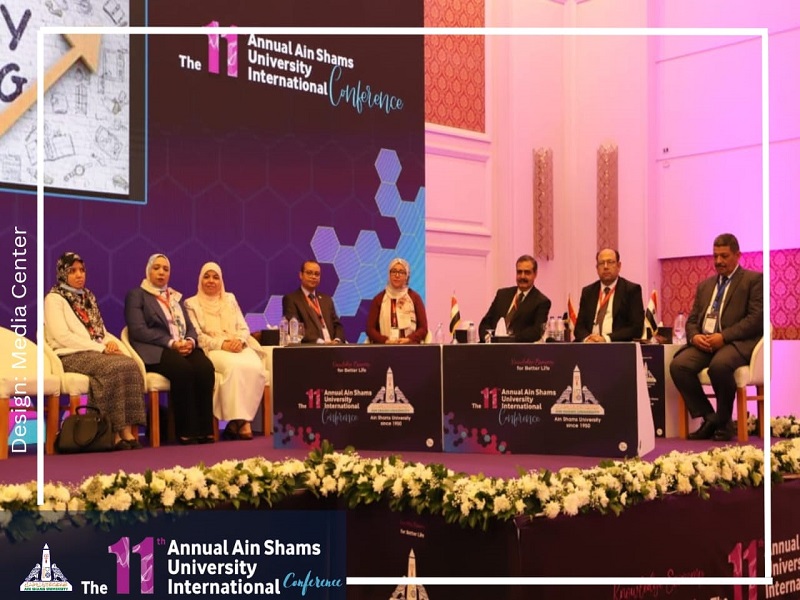Aspects of Nuclear Science... a joint session with the Egyptian Atomic Energy Authority within the activities of the second day of the 11th annual Ain Shams University International Conference
Within the activities of the second day of the eleventh annual international conference of Ain Shams University, which was held for two days, 10-11 May, a session entitled "Aspects of Nuclear Sciences", was held in collaboration with the Egyptian Atomic Energy Authority. The session was moderated by Dr. Nabil Al-Farmawy, Professor of Nuclear and Radiological Physics and Head of the Physics Department, Faculty of Science, Ain Shams University, Prof. Hassan Saleh.
On the physical methods for assessing radiation doses retrospectively, Prof. Nabil Al-Farmawy, Professor of Nuclear and Radiological Physics and Head of the Physics Department at the Faculty of Science, Ain Shams University, talked about the effect of radiation on humans, whether he works in an environment that forces him to deal directly with radiation, or an ordinary person who does not deal with radiation in any way. Fifteen years in Germany and the latest research and methods of detecting radiation, whether through blood if the radiation infection occurred within a month at most, or through teeth, bones, hair and nails, in which radiation is stable for very long periods.
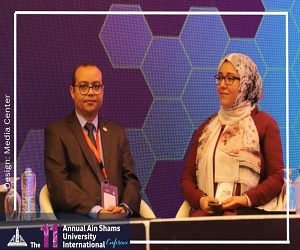 |
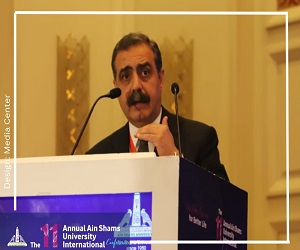 |
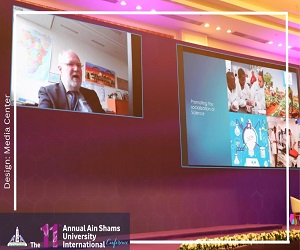 |
||
About the microbial footprint for the treatment and recovery of radionuclides, Prof. Noha Ghoneim, Lecturer of Microbiology at the Department of Botany – Faculty of Girls for Arts, Sciences and Education - Ain Shams University and dealt with the fact that some microorganisms live in harsh environments, including intense ionizing radiation and that they use different mechanisms to adapt and deal with RNs.
In addition, the microbial fingerprints of sites containing RNs show the common microbial species in such environments. Studying these microbes and how they adapt to RNs can be exploited in design techniques for use in bioremediation and recovery of RNs from natural and radioactive resources.
She added that research endeavors should focus on the use of microbial fingerprints to further investigate the union of microbes in environments containing RNs to overcome the problem of depleting RNs reserves and the long-term safe disposal of nuclear waste as well.
Under the title "From potential to prosperity, using nuclear science and technology to achieve great corridors," A. Shawkat Abdel-Razek, Director of the African Division of the International Atomic Energy Agency, Vienna, on the main work areas of the Agency in the areas of peaceful use of nuclear science and technology, safety, security, safeguards and verification.
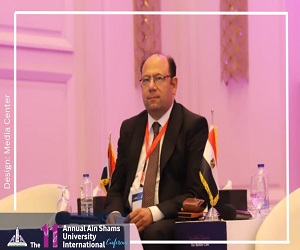 |
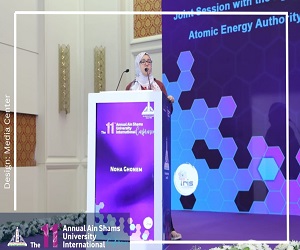 |
The IAEA promotes a strong and sustainable global framework for nuclear safety and security in member states, and works to protect people, society and the environment from the harmful effects of ophthalmic radiation while the NAEA's legislative assistance program educates member states on international instruments in the nuclear field and helps them comply with their obligations and their international obligations, as well as in drafting the corresponding national nuclear legislation.
His Excellency explained that more than 70% of Africa's population does not receive radiotherapy and it is expected that the cancer burden in sub-Saharan Africa will double, reaching one million new deaths by 2040.
This is in addition to the impact of hunger on 278 million people in Africa representing 20.2% of the population. The productivity of major crops (maize, wheat, etc.) is low in Africa.
Accordingly, 25 African countries import more than a third of their wheat from Russia and Ukraine, and 15 of them import more than half, while the average fertilizer use rate in the sub-Saharan region is estimated at 15 kg / ha in 2017 and 19 kg / ha by 2021, which is still Less than the Abuja Declaration target of 50 kg/ha.
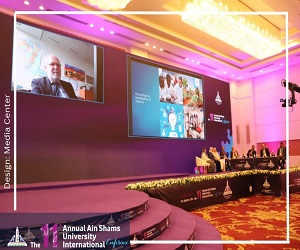 |
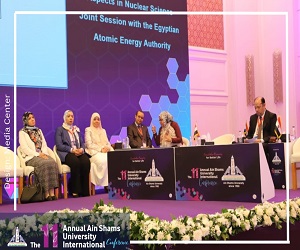 |
Mrs. Randa Mahmoud Assistant Professor of Radiation Physics - Department of Radiation Protection –the Nuclear and Radiological Safety Research Center Atomic Energy Authority reviewed some research activities of the Egyptian Atomic Energy Authority and the functional structure of the Egyptian Atomic Energy Authority and nuclear and radiation safety research taken into consideration; Three basic standards are safety, security, and safeguards. Nuclear and radiation safety systems aim to assess, manage and control radiation exposure, radiation protection principles, exposure categories, and radiation exposure cases.
Mr. Tamer Sakr, Professor of Nuclear and Radiopharmaceutical Chemistry and Radioisotope Production Consultant at the Second Egyptian Research Reactor Complex and the Hot Laboratories Center, the Atomic Energy Commission, dealt with the production and applications of radioactive isotopes, the production of radioisotopes, the testing of materials, the production of semiconductors, and research and development in physics and engineering.
Mrs. Amani Refaat, Professor of Radiochemistry, National Center for Radiation Research and Technology, Atomic Energy Agency - Department of Polymer Chemistry, spoke about the applications used by the Authority in a number of fields, including biopolymers and biocomposites for wound care materials and polymeric hydrogels as platforms for emerging biomaterials to enable hemostasis and wound healing, which enhances healing Wounds instead of just covering them In addition to the radiation protection lead apron for radiation protection provided by the lead apron, continuous research is being done to develop a non-toxic, portable, lead-free radiation protection apron.
While Prof. Rehab Abdel Professor of Chemical Nuclear Engineering - Atomic Energy Authority presented a summary of the research trends found in the research plans of the departments of the two divisions of Radioactive Waste Management and Nuclear Fuel Management. Where the sources of radioactive waste included in the action plans were introduced, which includes waste resulting from the production and use of radioactive isotopes and naturally radioactive materials (TENORM & NORM), which result from the extraction and processing of ores and minerals such as those generated from oil extraction. In addition to the waste associated with the operation and decomposition of nuclear fuel cycle facilities. The activities of managing this waste were also defined, which include characterization, pre-treatment activities, treatment activities, waste units' preparation activities and waste burial. Models of the scientific research event published in the period (2020-2023) were also reviewed by colleagues working in these fields, in addition to reviewing research on the processes of separating elements of economic importance from their primary and secondary sources.


.svg)
